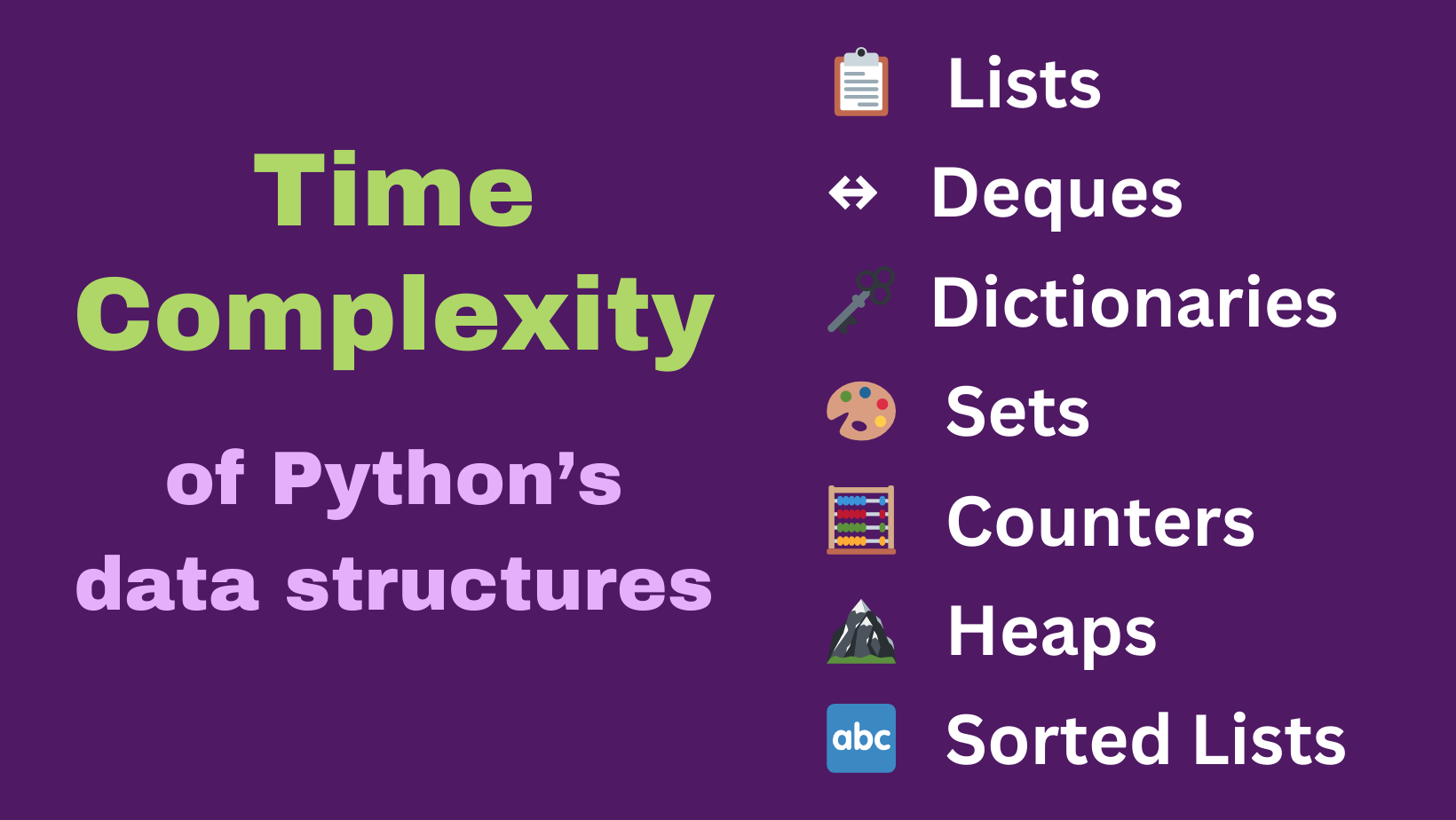Trey Hunner writes:
This article is primarily meant to act as a Python time complexity cheat sheet for those who already understand what time complexity is and how the time complexity of an operation might affect your code. For a more thorough explanation of time complexity see Ned Batchelder’s article/talk on this subject.
Read Python Big O: the time complexities of different data structures in Python



Shouldn’t this be
O(n log n)? I guess Python doesn’t have a list that stays sorted.As a workaround, just use dict keys with no values instead.
Sets stay sorted, no?
Nope, sets are unordered.
Ah, sorry. Sets are unique, not ordered. Thanks!
Yeah, I just think it’s kind of odd though. If a language only has lists and hash maps, my go-to is to use a hash map for uniqueness, and sort the list for ordered lists.
But in Python, it’s backwards where I use the hash map (dict) for ordered data and the set for uniqueness, because hash maps are unordered in most languages I’ve used.